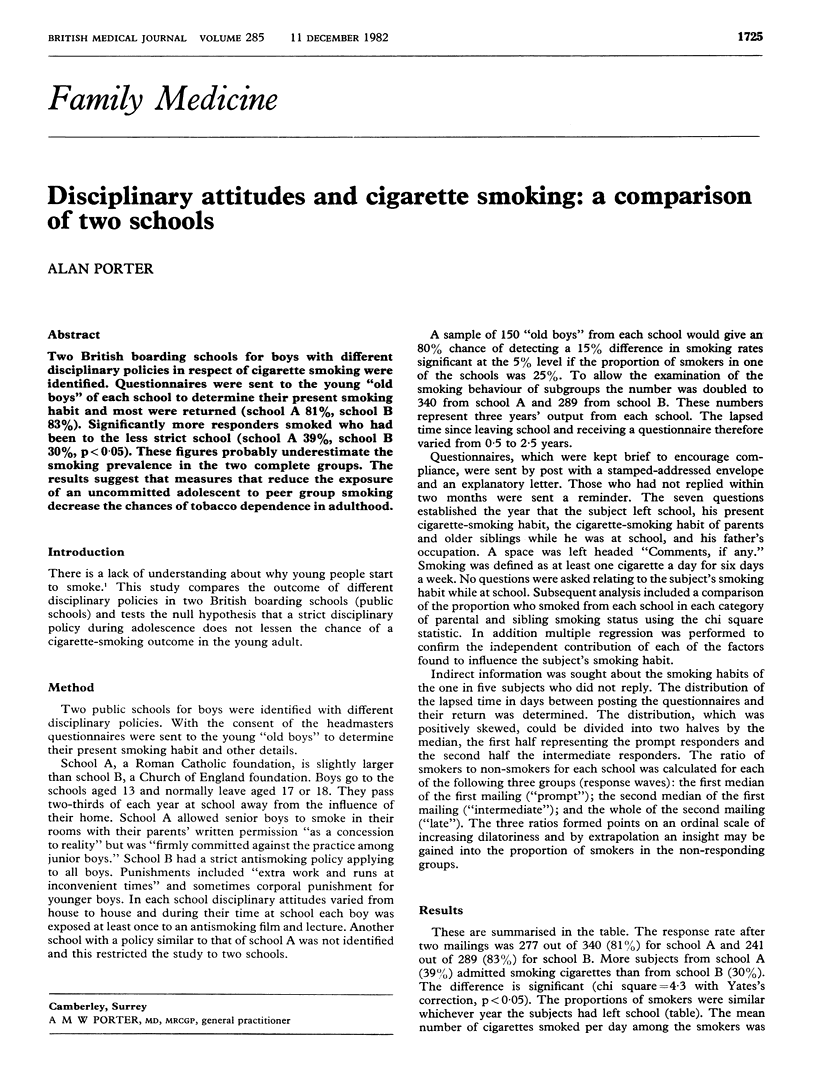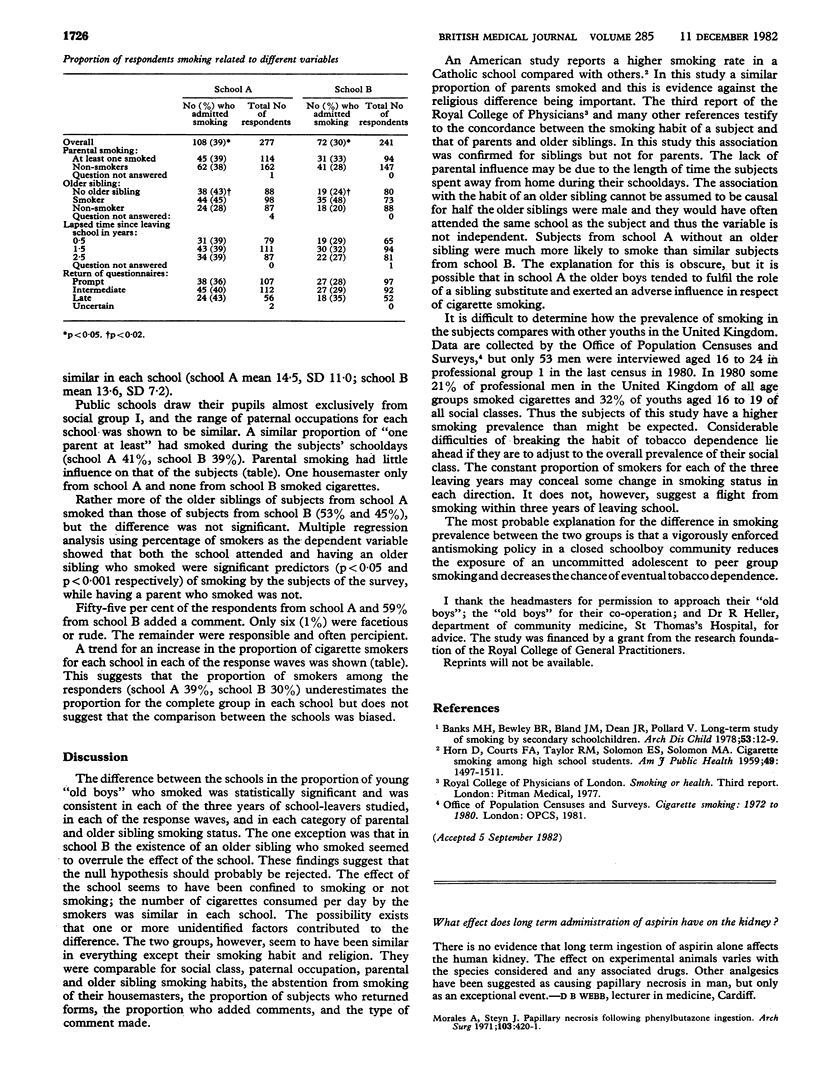Abstract
Two British boarding schools for boys with different disciplinary policies in respect of cigarette smoking were identified. Questionnaires were sent to the young "old boys" of each school to determine their present smoking habit and most were returned (school A 81%, school B 83%). Significantly more responders smoked who had been to the less strict school (school A 39%, school B 30%, p less than 0.05). These figures probably underestimate the smoking prevalence in the two complete groups. The results suggest that measures that reduce the exposure of an uncommitted adolescent to peer group smoking decrease the chances of tobacco dependence in adulthood.
Full text
PDF

Selected References
These references are in PubMed. This may not be the complete list of references from this article.
- Banks M. H., Bewley B. R., Bland J. M., Dean J. R., Pollard V. Long-term study of smoking by secondary schoolchildren. Arch Dis Child. 1978 Jan;53(1):12–19. doi: 10.1136/adc.53.1.12. [DOI] [PMC free article] [PubMed] [Google Scholar]
- HORN D., COURTS F. A., TAYLOR R. M., SOLOMON E. S. Cigarette smoking among high school students. Am J Public Health Nations Health. 1959 Nov;49:1497–1511. doi: 10.2105/ajph.49.11.1497. [DOI] [PMC free article] [PubMed] [Google Scholar]
- Morales A., Steyn J. Papillary necrosis following phenylbutazone ingestion. Arch Surg. 1971 Sep;103(3):420–421. doi: 10.1001/archsurg.1971.01350090102024. [DOI] [PubMed] [Google Scholar]


